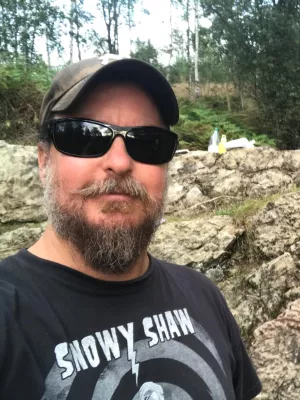
Mats Eriksson
Professor

Coprolite morphotypes from the Upper Cretaceous of Sweden: novel views on an ancient ecosystem and implications for coprolite taphonomy
Author
Summary, in English
Coprolites (fossilized faeces) are common, yet previously unreported, elements in the Campanian (Upper Cretaceous) shallow-marine strata of Asen, southern Sweden. They are associated with a diverse vertebrate fauna and comprise at least seven different morphotypes that suggest a variety of source animals. Their faecal origin is corroborated by several lines of evidence, including chemical composition (primarily calcium phosphate), external morphology and nature of the inclusions. Preservation in a fossil coquina, interpreted as a taphocoenosis, suggests early lithification promoted by rapid entombment. This would have prevented disintegration of the faecal matter and facilitated transportation and introduction to the host sediment. The coprofabrics can generally be correlated to specific gross morphologies, supporting a morphology-determined coprolite classification. Moreover, having been deposited under presumably comparable taphonomic conditions, variations in coprofabrics infer differences in diet and/or digestive efficiency of the host animal. Size and morphology of the coprolites imply that most, if not all, were produced by vertebrates and the largest specimens infer a host animal of considerable size. Two spiralled coprolite morphotypes yield bone fragments and scales of bony fish, suggesting that the producers were piscivorous sharks. Other coprolites contain inclusions interpreted as the remains of shelled invertebrates, thus indicating that they may have derived from durophagous predators and/or scavengers. The occurrence of small scrapes, tracks and traces on several specimens suggest manipulation of the faeces by other (presumably coprophagous) organisms after deposition. The collective data from the Asen coprolites provide new insights into a shallow-water Late Cretaceous marine ecosystem hitherto known solely from body fossils.
Department/s
- Lithosphere and Biosphere Science
Publishing year
2011
Language
English
Pages
455-468
Publication/Series
Lethaia
Volume
44
Issue
4
Links
Document type
Journal article
Publisher
Taylor & Francis
Topic
- Geology
Keywords
- Coprolites
- vertebrates
- coprofabrics
- taphonomy
- trophic levels
- Upper
- Cretaceous
- Sweden
Status
Published
ISBN/ISSN/Other
- ISSN: 0024-1164

